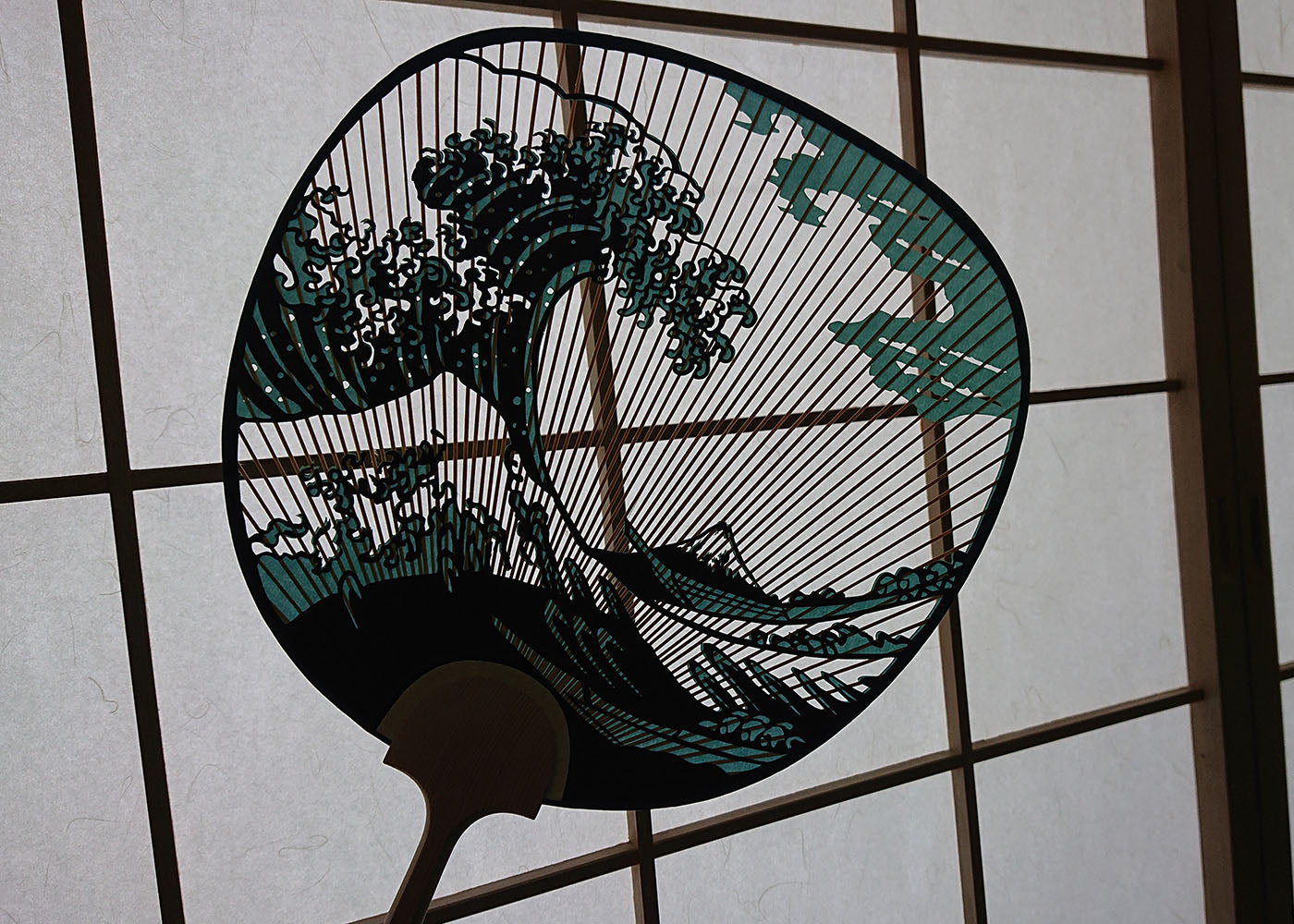The wind you make by yourself will cool you down.
Do you enjoy summer vacation?
Here, in Kyoto, the rainy season was over at last, and now, we are in the middle of summer: scorching heat of the sun, high humidity, the hot smell of road side tree, the temperature rises over 35℃ (95degree Fahrenheit), and the buzz of cicada makes us even hotter.
The air conditioners are widespread under above harsh environment in Japan, but it is not always good to really on the air conditioner if we think to our health and global warming.
As I mentioned on the latest article, Japanese people has been living in the well-ventilated wooden house. The house should be constructed to survive the hot and humid summer in Japan, because Japanese summer is more though than winter cold.
Well ventilated house is so important to put in the wind in the house.
The wind is important to feel cool
We feel hot in summer, because the layer of the air warmed by body heat is covering your body.
If the wind blows, the layer of the warmed air is broken and the heat runs away. When the wind blows by 1m/
s, the apparent temperature will down 1℃(33.8degree Fahrenheit).
Even though you can not stay in the cool air, please try to be in shade and to make wind by your self, so try to fan your self.
Uchiwa, traditional Japanese fan
When you hear "traditional Japanese fan", folding fan, we called as "Sensu" might come to your mind at first.
On the other hand, when you see following type of fan, you might remember what was distributed freely in the shopping street, or some event venue if you have been to Japan in summer.

It is called as "Uchiwa" in Japan.
The origin of the name of "Uchiwa" is "the wing to drive away the mosquitos".
"Uchi" means "hit or drive away " and "wa" means "wing". The shape of "Uchiwa" seems the shape of wing, people called it like "Uchiwa". So, traditionally Uchiwa was written like "打羽" in kanji, but we actually write as "団扇". The origin of this writing is China, and it means "round fan".
As you might expect, it is said that the "Uchiwa" was brought from China in 3th to 4th century.
At that time, people used it for the amulet ritual, but it was so sacred tool, it was often used to cool down the hot meal for the Emperor.
When the Samurai era arrives, especially 13th to 14th century, Busho (leader of Samurai) used it to take command in the battle filed. They called it as "Gunbai Uchiwa" and it was thought as a God of victory.
After the 17th century, general people like farmers and merchants began to use it for cooking rice and get cool during summer.
Kyo Uchiwa, made by hands
We have several collection of "Uchiwa" of Kyoto, "Kyo Uchiwa".
These are all made by hands of high skilled craftsman.
The feature of Kyo Uchiwa is here.

As you remark above image, the part of handle and ribs are connected well.
Usually, ribs and handle are made of only one part and you can not see the connected part.
However, regarding Kyot Uchiwa, a part of handle is put after making a part of ribs of bamboo.
This is why, the appropriate weight is concentrated on the center of Uchiwa and it would make comfortable wind.
Look at this Kyo Uchiwa!

You can see transparent and thin bamboo ribs a lot. This fan is only made of bamboo not by using paper, but it makes also comfortable wind and you can also enjoy as an ornament in your living room.
The more ribs on Uchiwa there are, the value is higher, and some Kyo Uchiwa has more than 100 ribs on it.
Comparing plastic ribs Uchiwa and Kyo Uchiwa
We try to use plastic one at first. Please click following image, you can check a movie.

"I can simply feel the wind, nothing than better." our shop member said.
Now, we try with Kyo Uchiwa. Please click following image, you can check a movie.
"Even though I move Uchiwa slowly, I feel enough wind and more comfortable!"
This large and bamboo made ribs produces gentle and comfortable wind, and the handle is also easy to hold.
And,,, the various kinds of design may also fascinate you, if you are interested in Japanese traditional arts.
If you are interested in, please visit our collection page from here.
Thank you so much for reading to the end.

